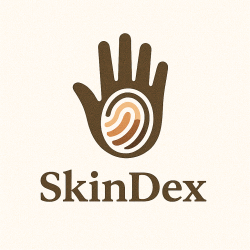“Why do I keep sunburning with SPF 50 on?” If you’ve said this before, you’re certainly not alone. Dozens of consumers, especially those with medium to dark skin, burn, itch, or develop chronic discoloration after using high-SPF sunscreen. It doesn’t make sense, and it’s infuriating, especially when you’re doing all the right things for sun safety. The truth is that SPF 50 doesn’t offer the absolute protection most believe.
SPF, or Sun Protection Factor, is an index of a sunscreen’s ability to block UVB rays, the kind that creates the sunburn you see. So SPF 50 would, theoretically, allow you to stay out 50 times longer than unprotected skin before burning — if you’d burn in 10 minutes, SPF 50 would last around 500 minutes. SPF, on the other hand, checks for only UVB protection, but not UVA, a critical flaw. UVA rays penetrate deeper into the dermis and induce long-term photodamage in the form of photoaging (wrinkles, loss of elasticity), suppression of the immune system, chronic hyperpigmentation, and skin cancer. Whereas UVB occurs in greatest intensity at noon, UVA occurs all day long, even on cloudy days, and through glass, and represents about 95% of ultraviolet radiation that strikes the Earth’s surface.
As for individuals with darker skin, who may not get sunburned as readily since melanin inherently absorbs UVB radiation, are at increased risk for post-inflammatory hyperpigmentation (PIH). PIH is a common consequence of acne, eczema, or any cutaneous injury, and UVA radiation tans such spots and impairs healing. Since SPF does not indicate UVA protection, someone applying SPF 50 may still experience flare-ups, discoloration, or stinging because their sunscreen is doing little to stop the UVA rays quietly damaging their skin.
Worse yet, in the United States, the FDA’s “broad-spectrum” labeling standards are relatively lenient. As long as a sunscreen has low levels of UVA protection relative to UVB, it qualifies — but that UVA protection may not be enough to prevent PIH or aging. This is unlike the standards in Europe and Asia. In Europe, UVA protection is quantified by the PPD (Persistent Pigment Darkening) system — an excellent designation for a PPD rating of 10–20+. In Japan and Korea, the PA system is used, with PA++++ being the maximum UVA protection.
To protect against both UVA and UVB, more than SPF is needed. Choose sunscreens that contain broad-spectrum filters like zinc oxide or titanium dioxide (physical blockers), or premium chemical filters like Tinosorb S, Tinosorb M, or Mexoryl SX/XL, which are photostable and give efficient coverage for both UVA and UVB spectrums. These ingredients are often present in more European and Asian products, which more clearly disclose UVA protection. For white cast-wary users — a problem on melanin-dense skin — tinted mineral sunscreens provide a more natural-looking blend with continued full-spectrum protection.
Takeaway
If SPF 50 hasn’t been cutting it, perhaps it’s because it wasn’t protecting you from what truly matters in the long term: UVA. For darker skin tones especially, the goal isn’t just to keep sunburn at bay — it’s to keep hyperpigmentation, flare-ups, and aggregated UV damage at bay. Next time you’re on a mission to shop for sunscreen, read past the number on the SPF. Your skin deserves protection that’s in tune with its needs — both on the surface and beneath.
References
“Sunscreen: How to Help Protect Your Skin from the Sun.” U.S. Food and Drug Administration, 10 Oct. 2023, www.fda.gov/drugs/understanding-over-counter-medicines/sunscreen-how-help-protect-your-skin-sun.
“What’s the Difference Between UVA and UVB Rays?” Skin Cancer Foundation, 27 June 2023, www.skincancer.org/blog/whats-the-difference-between-uva-and-uvb-rays.
“How to Apply Sunscreen.” American Academy of Dermatology Association, www.aad.org/public/everyday-care/sun-protection/sunscreen/how-to-apply-sunscreen.
Williams, Kiyanna, MD. “Why Sunscreen Is an Important Tool for People of Color.” Cleveland Clinic Health Library, Cleveland Clinic, 23 May 2024, health.clevelandclinic.org/sunscreen-for-black-people.
“What’s the Difference Between UVA and UVB Rays?” Focused on Health, MD Anderson Cancer Center, n.d., www.mdanderson.org/publications/focused-on-health/what-s-the-difference‑between‑uva‑and‑uvb‑rays‑.h15‑1592991.html.
Moyal, D., A. Chardon, and N. Kollias. “UVA Protection Efficacy of Sunscreens Can Be Determined by the Persistent Pigment Darkening (PPD) Method. (Part 2).” Photodermatology, Photoimmunology & Photomedicine, vol. 16, no. 6, Dec. 2000, pp. 250–255. PubMed, PMID 11132127.“PA ++++ in Sunscreen: What It Means & Why It Matters.” Colorescience Learn, Colorescience, [no date], www.colorescience.com/blogs/learn/what-is-pa?srsltid=AfmBOooy7s7avHhFFs7v6z0hd09als6YQVhIvzcy2beQ1Sl0jrTZlKap
